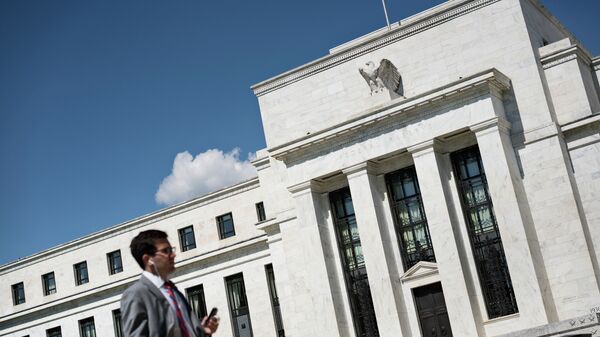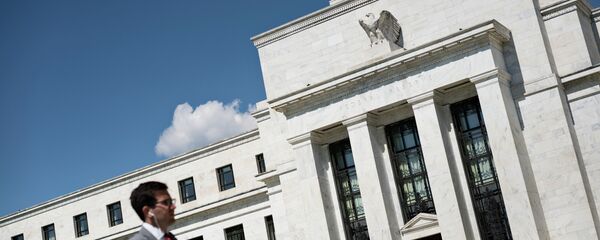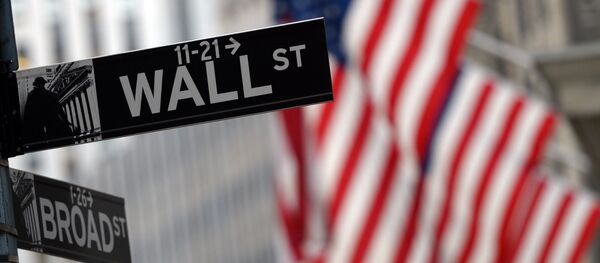Kristian Rouz — Concerns over slowing economic growth in the US against the background of international headwinds and a strengthening dollar hitting corporate America, combined with disinvestment in the real economy triggered heated debates in the Federal Reserve regarding the pace raising base interest rates. After having initially planned to undertake four consecutive 0.25% rate increases throughout 2016, the regulator might consider less hikes this year in order to avoid the looming recession.
The Fed conducted a planned policy meeting in 26-27 January, and the minutes documenting the debate are an indication the regulator is acutely aware of the existing risks.
"If the recent tightening of global financial conditions was sustained, it could be a factor amplifying downside risks," the Fed minutes, published Wednesday, read.
After the $8 trln capital wipeout in stocks in January, the risks of bubbles inflating in the US financial sector have subsided significantly; a speedy Fed hike of borrowing costs is rendered largely pointless. Therefore, the regulator said it might be "altering their earlier views of the appropriate path for the target range for the federal funds rate," the minutes read.
In other words, it is unlikely that there will be four consecutive interest rate hikes this year, as previously planned. Instead, the Fed is likely to stick to their data-based approach, closely monitoring the broader economic indicators, including labor market figures, growth indicators and outlook and the balance between private and governmental sectors performance as reported by the Commerce Department. Global crude prices, along with stock market dynamics, also remain key factors to Fed decision-making.
International headwinds, however, remain one of the greatest concerns to the Fed. As outlined in the minutes, "a number of participants were concerned about the potential drag on the US economy from the broader effects of a greater-than-expected slowdown in China and other (developing economies)."
The Federal Reserve also noted that Chinese economic turmoil might reflect negatively on Canada and Mexico, two prominent raw material exporters and also the US' biggest trade partners. Although the US is still running a massive balance sheet deficit, deterioration in the economic environment of their closest trading peers would mean a further slowdown stateside, eventually affecting the Fed policies to the no-action point or even a possible loosening of monetary conditions once again. The example of negative interest rates in the Eurozone and Japan might seem quite appealing to certain decision-makers, particularly so should the growth falter or decline further.
In US macro data, however, domestic industrial production posted unexpectedly bright results in January, advancing the most in 14 months, with manufacturing and utility sectors accelerating, even though the dollar's strength and cheap oil still render their output largely uncompetitive. US industrial production added 0.9% in January.
"If we step back and view the economy from afar, we see that consumers are spending, manufacturing is beginning to rebound and housing, though not great, is hardly weak. The domestic economy is fine," Joel Naroff of the Holland, PA-based Naroff Economic Advisors said.
Consequently, US Treasuries fell in value and stocks rallied on Wall Street, as positive macro signals render investors dump haven assets in favor of more lucrative opportunities. Dovish Fed signals also bolstered a relief sentiment across the US.



